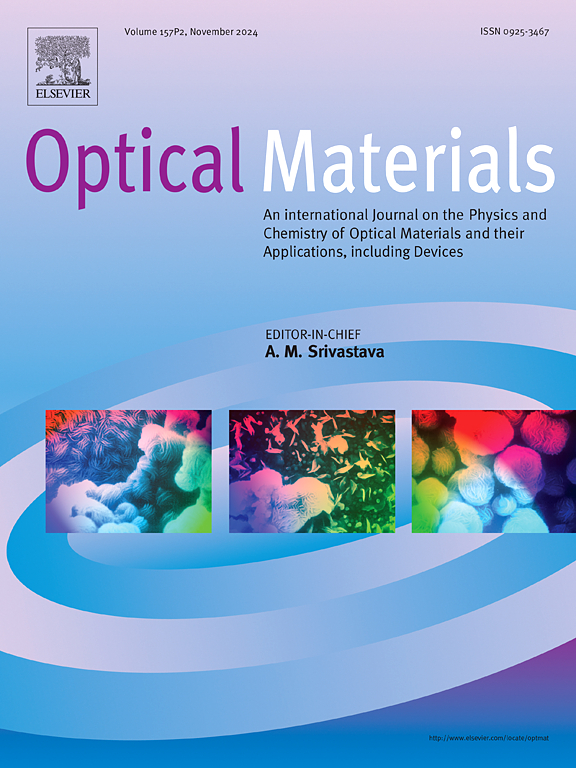Designing of broadband solar omnidirectional reflector with a chirped multilayer using an optimization procedure based on a genetic algorithm
IF 3.8
3区 材料科学
Q2 MATERIALS SCIENCE, MULTIDISCIPLINARY
引用次数: 0
Abstract
We have proposed an innovative optimization tool to design a solar broadband omnidirectional reflector (BOR) that operates across the entire solar irradiation spectrum by using a two-step procedure based on genetic algorithm. The BOR consists of chirped multilayer forming a discrete array of sub-mirrors, each with different resonance wavelengths. The central wavelength distribution is based on the Padé approximation. Three different types of sub-mirrors has been tested: periodic, Thue-Morse, and hybrid multilayer. In the first step, an integer genetic algorithm optimizes the resonance wavelength distribution, the number of submirrors, and the number of layers in each submirror. In the second step, the thicknesses of the layers are randomized to further enhance the reflection of the solar irradiance spectrum. All numerical simulations of electromagnetic propagation were performed using the scattering matrix method. The best result was obtained with a periodic BOR consisting of 60 layers, achieving an overall reflectivity of 98 % for the solar irradiance spectral range between 400 and 2000 nm across all incident angles for the both polarizations. The optimization tool is tested by evaluating the reflectance efficiency of optimized BOR with experimental irradiance of light solar simulators.
利用基于遗传算法的优化程序设计具有啁啾多层结构的宽带太阳能全向反射器
我们提出了一种创新的优化工具,通过使用基于遗传算法的两步程序,设计出一种可在整个太阳辐照光谱范围内工作的太阳能宽带全向反射器(BOR)。全向反射器由啁啾多层板组成,形成离散的子镜阵列,每个子镜具有不同的共振波长。中心波长分布基于帕代近似。测试了三种不同类型的子镜片:周期镜片、Thue-Morse 镜片和混合多层镜片。第一步,采用整数遗传算法优化共振波长分布、子镜数量和每个子镜的层数。在第二步中,对各层的厚度进行随机调整,以进一步增强对太阳辐照光谱的反射。所有的电磁传播数值模拟都是采用散射矩阵法进行的。由 60 层组成的周期性 BOR 获得了最佳结果,在 400 到 2000 nm 的太阳辐照光谱范围内,两个极化的所有入射角的总体反射率均达到 98%。通过用光太阳模拟器的实验辐照度评估优化 BOR 的反射效率,对优化工具进行了测试。
本文章由计算机程序翻译,如有差异,请以英文原文为准。
求助全文
约1分钟内获得全文
求助全文
来源期刊

Optical Materials
工程技术-材料科学:综合
CiteScore
6.60
自引率
12.80%
发文量
1265
审稿时长
38 days
期刊介绍:
Optical Materials has an open access mirror journal Optical Materials: X, sharing the same aims and scope, editorial team, submission system and rigorous peer review.
The purpose of Optical Materials is to provide a means of communication and technology transfer between researchers who are interested in materials for potential device applications. The journal publishes original papers and review articles on the design, synthesis, characterisation and applications of optical materials.
OPTICAL MATERIALS focuses on:
• Optical Properties of Material Systems;
• The Materials Aspects of Optical Phenomena;
• The Materials Aspects of Devices and Applications.
Authors can submit separate research elements describing their data to Data in Brief and methods to Methods X.
 求助内容:
求助内容: 应助结果提醒方式:
应助结果提醒方式:


